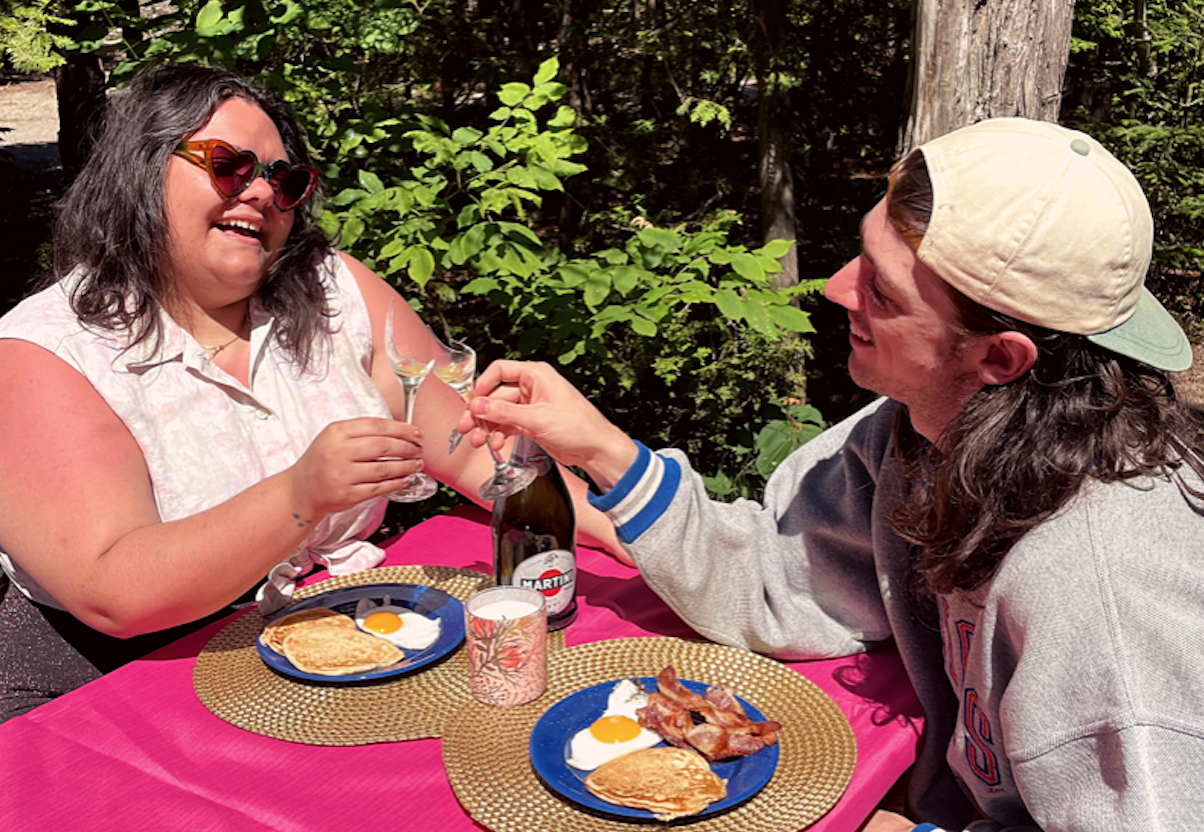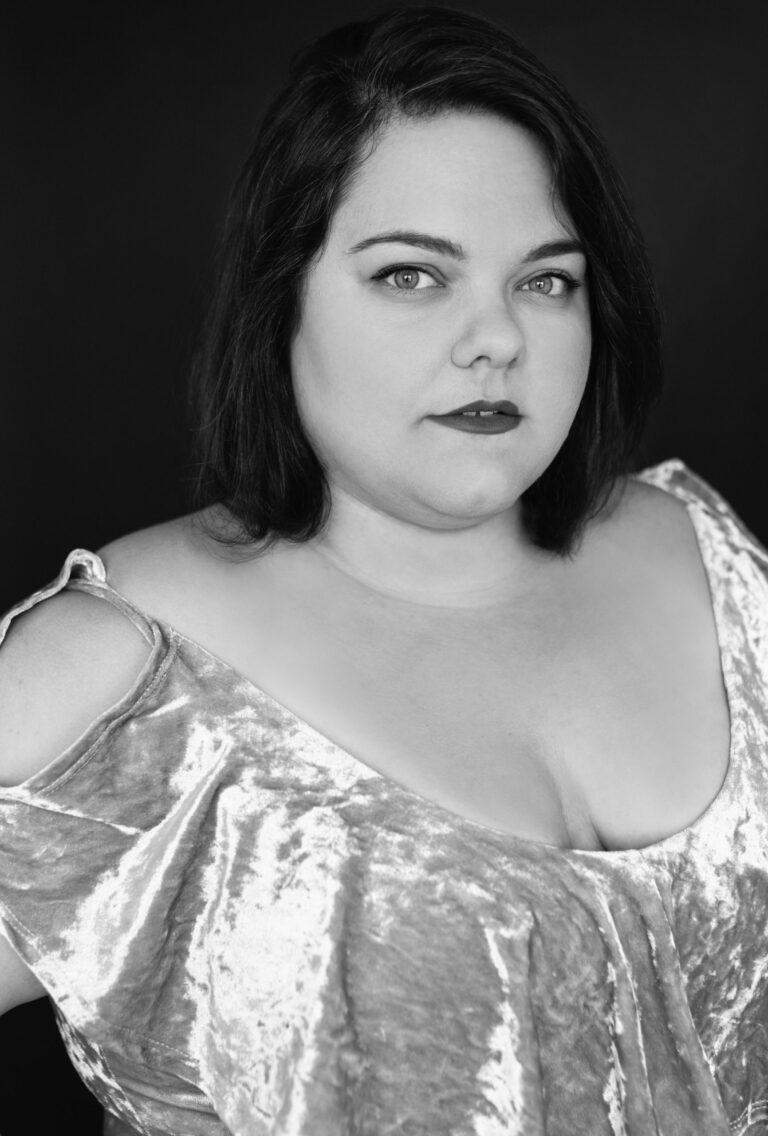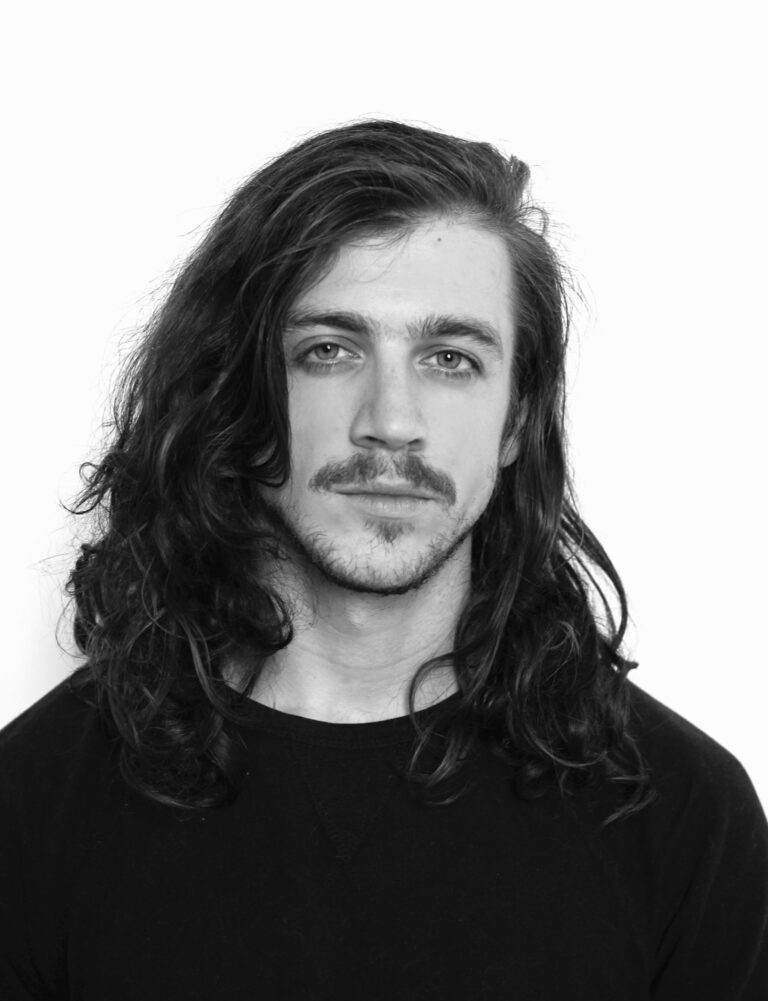It’s a Beautiful Day for Brunch and to Arrest the Cops That Killed Breonna Taylor
It’s undoubtedly cliché to note that inspiration happens in strange places.
But clichés become what they are for a reason.
Last summer I, Patrick, was having a picnic with friends at Toronto’s Humewood Park—in classic social distancing fashion—and as we chatted, we began discussing the strange ways social media was being used in the wake of George Floyd’s state-sanctioned summary execution. It was not the first time I (or any of these friends) had thought critically about the utility of applications like Instagram in social justice movements, but this particular conversation lingered with the question a little longer than usual.
Something simply felt different.
We were all disturbed and distressed by the surge in Racial Justice Content™ that we saw being shared by so many of our peers on social media, seemingly without any reflection or tangible effort on their end to think, act, and move through the world in a critically different way. We questioned who these posts were for, and what material effects these circulations of singular infographics, book lists (that, undoubtedly, were often un-read by the sharers), and tweets were having. We wondered—quite pessimistically, to be sure—if these patterns of circulation were not more about the people doing the sharing themselves, about their reputations, than about ending anti-Blackness.
(In defense of our pessimism: the fact that so few could advocate for anything beyond punishing individual police officers rather than, for instance, abolishing the police and prisons entirely, speaks to the limitations of the political imagination on offer.)
This white woman’s version of an anti-racist poetic hit that incredibly rare sweet spot for cringe.
The group of us at the park, mostly being students/academics, did what we often do best—brought up a case example of this material for us to collectively unpack. One friend told us about an actor friend of hers who had posted a sad photo of her lying against a mirror with a multiple-paragraph statement, confessing variously to the privilege of her historical silence and her simultaneous willingness to have difficult conversations now to change things. As my friend started reading out the post, I realized that this would be an incredible monologue, and so my friend passed me the phone to dramatically read aloud. I proceeded to wax this white woman’s version of an anti-racist poetic to the assembled group of picnickers. The performance was met with hearty laughter and groans alike—alongside a collective recognition that the post in question hit that incredibly rare sweet spot for cringe.
When I was done, a friend said: “I would pay to watch this.”
And that was the moment I thought, “perhaps there’s more here.”
Jump to a couple colder months later, and I, Carly was curled up on a Zoom call with Patrick discussing potential shows to create, having landed a spot for the 2021 Hamilton Fringe Festival Digital Exclusives. Shortly before we started our conversation, Patrick had come across a post on instagram from a person they knew with the caption: “[i]t’s a beautiful day for brunch and to arrest the cops that killed Breonna Taylor.” Shamelessly posed within the photo was a white woman seated at a laden restaurant table, mimosa in hand, smiling happily and reveling in the glow of her luxurious brunch. The comment section was filled with people commenting about how proud they were about her taking a political stand in this way (by… openly drinking orange juice and champagne at a meal that is so famous for this orange juice and champagne combo that someone came up with the idea to make it bottomless? Groundbreaking.), as well as people disregarding the ‘message’ entirely to comment on how ‘fire’ she looked.
Patrick raised the image to me, and we discussed the strange and deeply anti-Black ways Breonna Taylor’s death was being transformed into social capital in this photo and in so many unsettling posts just like it, and all of the necessary mis-steps to have happened for this person to make this kind of public display and be clearly confidently pleased in it. This quickly pulled us into a much broader conversation about the ‘global reckoning’ people kept insisting the world was having about anti-Blackness following George Floyd’s execution, and the new patterns of engagement we were seeing that seemed to usher in a new era of personal branding. In this new method of branding, cultural clout was made through the articulation of (performative) markers of wokeness.
This is to say, we discussed how the Breonna Taylor brunch post was emblematic of what we saw around us. It was in this dynamic discussion with my favourite collaborator that I, Patrick, was ultimately reminded of that actor’s post shared at the picnic which felt like a lifetime ago. For months, people had been performing a kind of Social Justice Politic that was precisely that – a performance – and using cases of police brutality against Black people to expand their own social networks and influence (whether intentionally or not). People were liking, sharing, reacting, commenting, and generating a kind of digital frenzy through these performative gestures, and cultivating a different way of building a social media presence. In developing our show, we started thinking about Instagram, Twitter, Facebook as a kind of digital proscenium, and these captions and comments as extended monologues and dialogues. In short, we began to recognize these posts as a kind of performance landscape, where violence against Black people was the kind of narrative hinge upon which all of these non-Black people made their own social media stories. In a kind of cruel and brutal narrative arc, the death of Black people was seemingly being ‘resolved’ by each individual’s performance of digital consciousness-raising. If the ubiquity of police-induced Black death was causing in non-Black people a kind of crisis in their sense of liberal justice in our ostensibly post-racial world, then the circulation and sharing of sound bites and infographics seemed to offer a kind of cruel catharsis for those people, who could transform the material reality of Black death into a kind of individualist politic, organized around making them feel good.
We started thinking of social media as a kind of digital proscenium, these posts as extended monologues and dialogues.
Of course, this was happening at multiple scales, as I, Carly, remembered some absurd Twitter attempts at activism from ice cream companies, vague promises from fast-fashion clothing brands, awkward emails from beloved children’s snacks and pet food alike that I had seen, and we thought about different politicians publicly stating “Black Lives Matter” while simultaneously increasing funding to police services and violently evicting the houseless in our own backyards. The contradictions everywhere felt apparent, and the thing that seemed to hold this hypocrisy together was precisely these online performances of awareness.
But, of course, these people and corporations were not really all that good at performing wokeness. There were all these strange slips, statements, and confessions, non-sequiturs, justifications, and apologies. The performances were… unhinged, ranging from melodramatic to completely banal. They could be gratuitous in length but also unbelievably terse. There was no rhyme or reason to the tense, or the prose. These people almost never advocated for actual political change–just variations of reform—and expressed absolutely no political education work. And so once you took off the Black-square tinted glasses, once you no longer assumed you needed to give people a pass for ‘trying’ (whatever that means), the humour (brutal as it is) of these performances really came through.
These people and corporations were not really all that good at performing wokeness.
And so it felt, to us, necessary to intervene into this pattern with a digital show precisely as a way to speak against these kinds of digital performances. Transforming this content into a show seemed to work for us in two ways. First, we recognized within it a kind of absurdist comedy that was entertaining in the kind of cringe humor way that has so rapidly gained traction, but also second (and more importantly), we hoped to offer folks a chance to re-orient their own sensibilities around how they might intuitively engage questions of racial justice. By highlighting the cringy-ness of this kind of engagement, we hoped to unsettle the for-granted nature by which it circulates and hopefully redirect it to sow seeds of real change.
We decided that we wanted to design a verbatim piece about this digital landscape because the more we fell into research rabbit holes seeing the kinds of things people said, the more we realized there was no possibility to write something more absurd than what people were already saying. As theatremakers we found ourselves saying, “you just can’t write this and have it be believable” on an almost-daily basis, and yet the digital footprint of foolishness in which we found ourselves digging was as enormous as the Grand Canyon. We found people comparing race relations to Dalmations (because they are both Black and white), people saying that what we need to learn from George Floyd’s death is how to better support Black businesses, people confidently saying they were abolitionists (by which they meant they believed in reducing prison spending).
The digital footprint of foolishness in which we found ourselves digging was as enormous as the Grand Canyon.
And everywhere these things were posted, the content was flooded with likes, comments, and that platform’s variations on re-shares.
But as we archived and worked through the potential verbatim text, we struggled deeply with how best to balance the absurdity of the text alongside a clarity of vision for the audience about what exactly we were trying to lampoon. We started realizing that this text was sometimes difficult in its verbatim form because part of why it was circulating so intensely was because people were invested in what it had to say. We often found some of the most harmful ideas being shared were the most palatable, or easily believed: wolves in sheep’s clothing. How could we represent this in its verbatim form to highlight its absurdity when these exact phrases and feelings circulated so rapidly because people saw no issues with it? Worse yet, most people thought it was commendable. The text made non-Black people feel good. It often invited them to think racial justice was possible by changing their mindsets, changing their viewing patterns, maybe donating a bit of money to an already successful non-profit (and of course, sharing that donation info with their viewers for further social clout). And so, we were trying to find a way to represent this content without reproducing precisely what it does so effectively—stifle critical thought.
So we often found ourselves asking, how do we attune our audiences to what is cringe in this text when they may be coming into it thinking that this text is a marker of progress? How does the black square read to a person who posted a black square?
We resolved that the text itself required annotations and redactions, as well as various extra-textual enhancements, in order to make clear what we were trying to say. Furthermore, the piece relied heavily on the performances themselves and thankfully our talented castmates Roselyne Dougé-Charles and Liz Whitbread have lent their artistry to help further push this envelope.
These questions remain with us, particularly because it seems that the culture of performative activism that this piece critiques is only further entrenching itself within our political imaginaries. The impetus to critique that imaginary, the impetus we explore through It’s a Beautiful Day for Brunch and to Arrest the Cops that Killed Breonna Taylor, remains an ongoing project. Prisons and police are receiving more funding than ever. Abolition has been positioned as a project for reform. People are heralding examples of representation—like Kamala Harris for VP or the celebration of Juneteenth – while eliding the material politics this representation does to exacerbate anti-Black violence (no one wants to talk about Kamala’s prison record in California or what a universal statutory holiday does to redress the violence of slavery). Symbolic ‘victories’ have been confused for markers of material progress, and digital media helps consolidate that confusion. The cringe performance of wokeness, this desperate attempt to build social capital by proving yourself to be ‘on the right side of history,’ is more disturbingly present in all its iterations than ever. Given this context, we might ask alongside one of the white women we quote in the show: “Where do we go from here?”
Or, perhaps more fittingly, what steps might be necessary to end this brutal and cringe performance of racial justice to shift into an actual movement towards the meaningful and inevitable abolition of the prison, of policing, and of our anti-Black world?










Comments